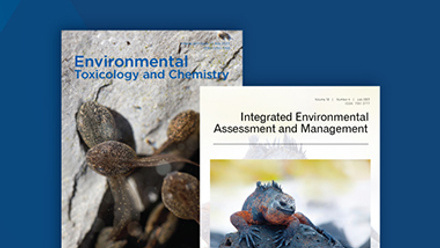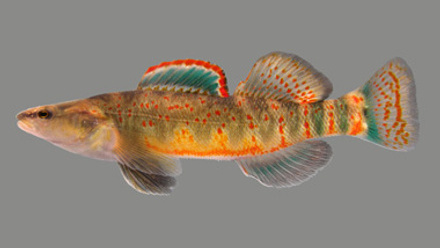Pharmaceutical Interest Group Webinar: Behavioral Impacts of Pharmaceuticals
Gerd Maack, German Environment Agency; Alex Ford, University of Portsmouth; Michael Bertram, Swedish University of Agricultural Sciences; Carlos Barata, Institute of Environmental Assessment and Water Research; Erin McCallum, Swedish University of Agricultural Sciences; and Bob Wong, Monash University
In February, the Pharmaceutical Interest Group (PhIG) organized its 4th webinar. As usual, the meeting was held twice to accommodate different time zones. This year, the topic was the behavioral impacts of pharmaceutical contaminants. Many drugs affect neurological processes and behavioral responses due to their impacts on the central nervous system. Therefore, there is an urgent need to incorporate behavioral responses into the environmental risk assessment of pharmaceuticals. However, as Alex Ford showed in his presentation of the results of a survey, most respondents are of the opinion that behavioral aspects are not used in risk assessment. Further, a portion of researchers within ecotoxicology, as well as in chemical regulation, still consider behavioral endpoints to be relatively less reliable. Michael Bertram guided the audience through the rapidly developing field of behavioral ecotoxicology towards increased environmental realism, ecological complexity and mechanistic understanding. Furthermore, he explained that current accepted methods for environmental toxicological assessment are generally limited to survival, growth, development and reproductive responses. Erin McCallum and Bob Wong demonstrated that important aspects of social behavior and choosing reproductive partners in wildlife can be heavily affected by hormones and other neuroactive pharmaceuticals, aspects not covered in the traditional test guidelines. Carlos Barata introduced high-throughput behavioral assays, using Daphnia magna as a model species. In times where reducing the use of vertebrates for testing is required but, at the same time, closing knowledge gaps in risk assessment is necessary, these assays can be of crucial importance. The abstracts of the presentations below will hopefully inspire and encourage readers to listen to the recorded webinars, which can be found on the PhIG website.
Perceptions about the quality and utility of behavioral (eco)toxicology to protect human and ecosystem health
Alex Ford, University of Portsmouth, UK
A survey was conducted on the perceptions and role of behavioral ecotoxicology in the protection of the environment and human health. Those surveyed included environmental scientists working in the field of environmental toxicology and behavioral ecology, and represented industry, government, NGOs and academia or research centers. Of the 166 respondents, 57% already worked with behavioral endpoints in ecotoxicology and/or ecology. The respondents agreed that contaminants can (97%) and are (77%) impacting wildlife and can (84%) and are (62%) impacting humans. Those responding to questions about the impacts on humans resulted in a higher proportion of answers that were neutral or didn’t know. Overall, respondents believed behavioral experiments to be repeatable (60%), reliable (61%) and relevant (84%), although those not studying behavior were more cautious in their answers. Respondents were more likely to be neutral when asked whether behavioral endpoints are more sensitive than standard toxicological endpoints (43%), but agreed (80%) that behavioral endpoints provide important alternative information. The largest overall response was to disagree with the statement that behavioral endpoints are currently used in risk assessment (42%) but the greatest proportion agreed they were essential (55%). The majority of respondents disagreed (63%) with the statement that we understood the risks of contaminants to wildlife and human health. However, 68% agreed that regulatory authorities should consider behavioral endpoints when making decisions over risk, with 78% of respondents agreeing this would likely come with increased costs for regulators and/or industry. Interestingly, 54% agreed and 28% were neutral that understanding the effects of contaminants on wildlife behavior is critical to protecting human health. The largest proportion of respondents disagreed (35%) or were neutral (30%) with the statement that behavior is easily linked to standardized apical endpoints and population-level effects. We discuss how this data could be used to further support our understanding and confidence in the effects of contaminants on human and wildlife behavior and the mechanisms by which they can be incorporated into risk assessment and regulation.
Frontiers in quantifying wildlife behavioral responses to chemical pollution
Michael Bertram, Swedish University of Agricultural Sciences
Bertram outlined new research directions and novel experimental approaches in the field of behavioral ecotoxicology. The overarching aim of the review that he presented was to guide the rapidly developing field of behavioral ecotoxicology towards increased environmental realism, ecological complexity and mechanistic understanding. This is particularly important considering that a portion of researchers within ecotoxicology, as well as in chemical regulation, still consider behavioral endpoints to be relatively less reliable and relevant than more conventional endpoints, such as mortality, development and reproduction. This perception lingers, despite the fact that other fields—from behavioral ecology to evolutionary biology and movement ecology—have demonstrated the association between animal behavior and individual- and population-level fitness since the mid-20th century. As such, Bertram and his team of co-authors encourage researchers working within behavioral ecotoxicology and related disciplines to explore the rich toolkit that is now available to propel our understanding of how chemical pollution impacts wildlife living in a rapidly changing world.
Behavioral responses of aquatic invertebrates to neuroactive pharmaceuticals: From high-throughput screening of hazardous compounds to therapeutical drug development
Carlos Barata, Institute of Environmental Assessment and Water Research, Spain
The aim of this presentation was to show that the ecotoxicological model crustacea Daphnia magna is suitable for developing behavioral assays able to predict neurological defects of pharmaceuticals. D. magna share with humans most neurological signalling pathways. There is reported evidence that neuroactive pharmaceuticals disrupt the dopaminergic, histaminergic, cholinergic, GABAergic and serotonergic signalling pathways and by doing so impair antipredator avoidance phototactic behavior and locomotion activity as well as reproduction and energetic metabolism. Barata’s group used commercially available assays to develop high throughput arrays to measure non-associative short-term memory and learning responses such as sensitization and habituation to repetitive light stimuli and how pharmaceuticals modify these responses. They also developed an automated vertical behavioral set up able to monitor both the vertical and horizontal phototactic behavior of D. magna, which allowed them to study the underlaying neurological signalling pathways of the diel vertical migration of zooplankton. A high throughput version the photoactive bio-assay was developed. Using all the available behavioral assays, they were able to show that illicit drugs such as ecstasy, amphetamine and cocaine disrupted D. magna behavior and its heart in a similar way as in humans after drug abuse. These drugs changed the dopamine and serotonin levels of D. magna in a similar way as reported in humans and mammalian models. In summary, Barata’s group demonstrated that D. magna can be used in high throughput screening for neuro-active chemicals and that many pharmaceuticals that target human neurological pathways do so in Daphnia. This means D. magna can be used in Tier 1 as a cost effective and ethical bioassay for neuroactive pharmaceuticals.
Assessing the effects of pharmaceutical pollutants on fish behavior with increased social and spatial complexity: Tales from the lab and field
Erin McCallum, Swedish University of Agricultural Sciences
McCallum presented conceptual and experimental work aimed at better understanding the roll of social and spatial complexity when determining the effects of pharmaceutical pollutants on aquatic animals. She shared two conceptual studies written by her and her colleagues that put forth ideas and predictions for how animal social environments might mediate the effects of chemical exposures. She also presented new results from two studies that test these hypotheses in both the lab and field. Her studies both used fish as model systems and study the effects of estrogenic and anxiolytic pharmaceutical pollutants.
Sex on steroids: Behavioral impacts of endocrine-disrupting chemicals
Bob Wong, Monash University, Australia
Wong discussed the impacts of veterinary pharmaceuticals on reproductive behaviors in fish. Valued at more than US$4.6 trillion annually, the global agricultural sector, fuelled by the ever-growing demands of human population growth and consumption, is a leading source of environmental pollution. Among the most concerning—but least well understood—are hormonal growth promotants (HGPs) used in livestock production to bolster meat yields. Despite import bans into the European Union and consumer safety concerns, HGPs are still widely administered to hundreds of millions of livestock throughout the world, resulting in vast quantities making their way into the environment. Wong discussed the impacts of 17β-trenbolone—a biologically active metabolite of trenbolone acetate, one of the world’s most widely used synthetic steroids found in HGPs—on male and female behaviors in the guppy, a freshwater fish with internal fertilization. Research in Wong’s group has shown how exposure of guppies to environmentally relevant concentrations of 17β-trenbolone increases male aggression during mating competition, and reduces male courtship displays towards exposed females, with males instead switching to coercive mating tactics that bypass female mate preferences. Exposed females were also generally less sexually responsive and less choosy towards potential mates. Disturbances of this kind can, in turn, affect which individuals are able to successfully reproduce and, therefore, the number and quality of offspring produced, which has important repercussions for the viability of populations.
Author's contact: [email protected]






